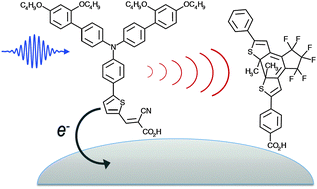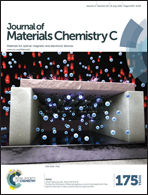Modulating electron injection from an organic dye to a titania nanoparticle with a photochromic energy transfer acceptor†
Abstract
We have prepared titania nanoparticles with an organic dye sensitiser and diarylethene molecular switch attached to the surface. Spectroscopic investigations show that the dye sensitiser's electron injection efficiency is reduced when the diarylethene is switched from its colourless, ring-open isomer to its coloured, ring-closed isomer, due to the introduction of a competing energy transfer pathway.


 Please wait while we load your content...
Please wait while we load your content...